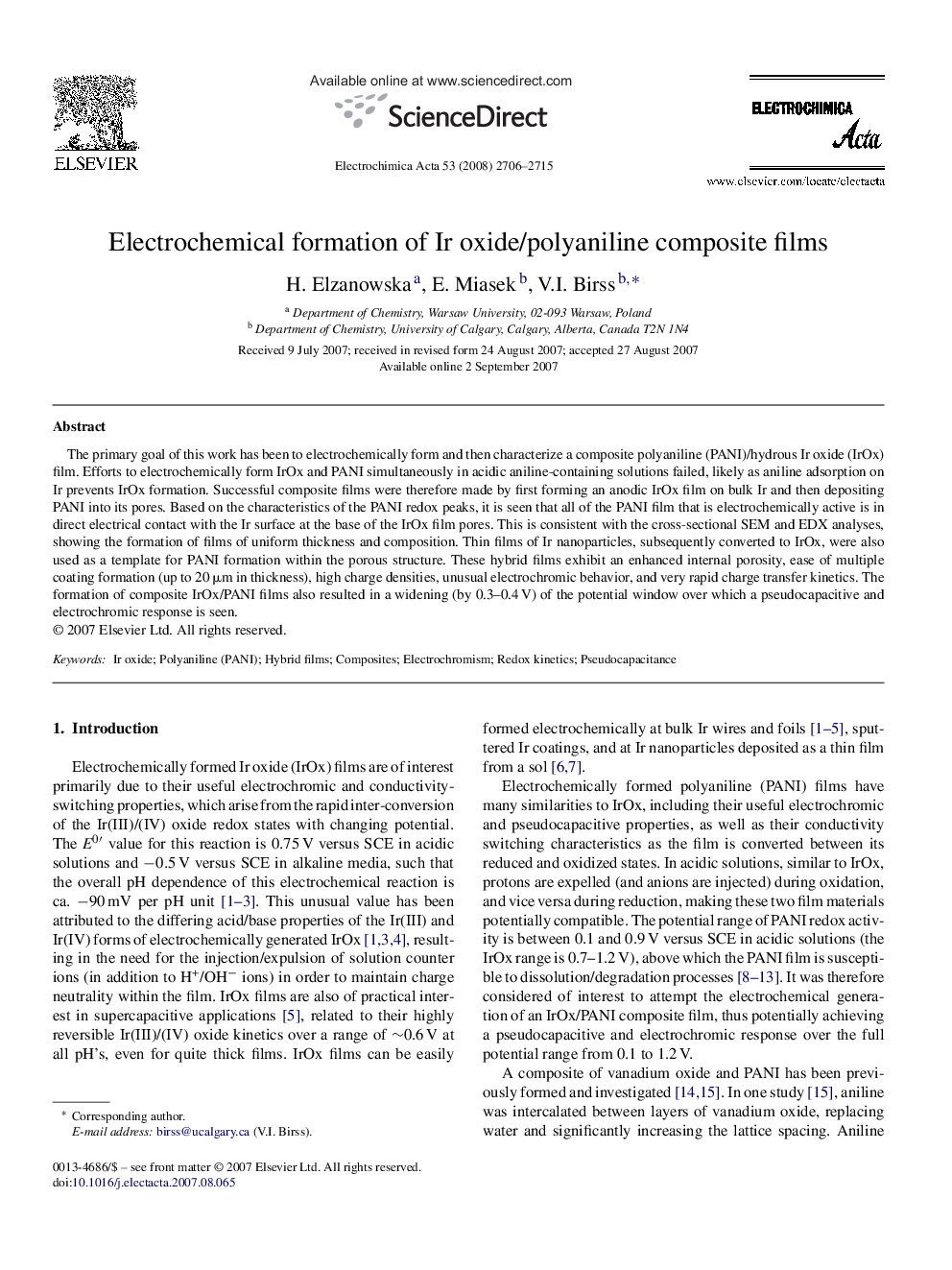| Article ID | Journal | Published Year | Pages | File Type |
|---|---|---|---|---|
| 193553 | Electrochimica Acta | 2008 | 10 Pages |
The primary goal of this work has been to electrochemically form and then characterize a composite polyaniline (PANI)/hydrous Ir oxide (IrOx) film. Efforts to electrochemically form IrOx and PANI simultaneously in acidic aniline-containing solutions failed, likely as aniline adsorption on Ir prevents IrOx formation. Successful composite films were therefore made by first forming an anodic IrOx film on bulk Ir and then depositing PANI into its pores. Based on the characteristics of the PANI redox peaks, it is seen that all of the PANI film that is electrochemically active is in direct electrical contact with the Ir surface at the base of the IrOx film pores. This is consistent with the cross-sectional SEM and EDX analyses, showing the formation of films of uniform thickness and composition. Thin films of Ir nanoparticles, subsequently converted to IrOx, were also used as a template for PANI formation within the porous structure. These hybrid films exhibit an enhanced internal porosity, ease of multiple coating formation (up to 20 μm in thickness), high charge densities, unusual electrochromic behavior, and very rapid charge transfer kinetics. The formation of composite IrOx/PANI films also resulted in a widening (by 0.3–0.4 V) of the potential window over which a pseudocapacitive and electrochromic response is seen.
